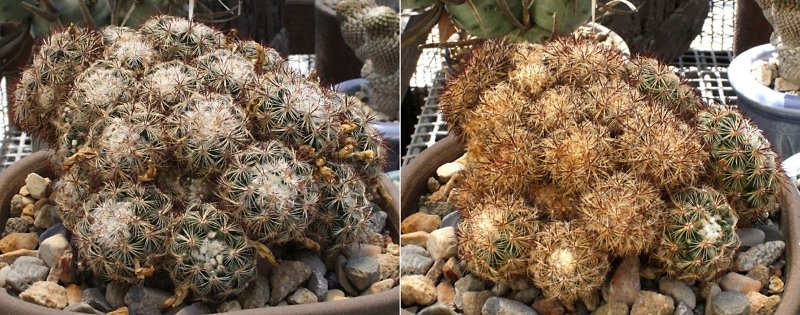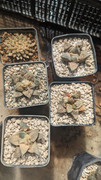Fohat85 wrote: ↑Sun Sep 10, 2023 2:59 pmDear Steve, I obtained my Arios in different ways, for example through seed or through different European sellers, but never from nature. The composition of the soil and the type of pot does not seem to be influential.
Cacti being collected in the wild have all kinds of problems when they're brought under pot cultivation, so at least we can eliminate that as a cause for what happened. However, there is another possibility...
I got a Mammillaria deherdtiana dodsonii from the California Cactus Center (Pasadena CA) in May 2012:

- Mammillaria_deherdtiana05062012.JPG (92.15 KiB) Viewed 3271 times
The plant was grown from seed by a collector who sold it to the CCC -- lucky find because they're rarely seen in US collections. The Pasadena area is very hot and dry during the summer, so the dodsonii grew up being acclimated to that level of heat. When I brought it home to my part of LA, it became acclimated to the more moderate Mediterranean coastal climate where I live. Highs up to a range of 32-35C -- no problem, and occasional highs up to about 38C aren't a problem either. Those are heat wave conditions in my area, and highs above 35C don't last long. Then came the summer of 2020 -- a week of highs around 38-39C in August, and the dodsonii was struggling. The worst was a sudden heat spike up to 46C one day in September -- here's what happened, 8/1/20 on the left and 9/16/20 on the right:

- Mammillaria_deherdtiana0801-09162020_01.jpg (124.23 KiB) Viewed 3271 times
The plant simply wasn't acclimated to the sudden heat spike, and if I had some forethought, I would've taken it into my garage before the spike hit. Lesson learned -- the dodsonii recovered enough to start growing again (new offsets included) in 2021, and when I see highs above 36C in my immediate forecast, back down to the garage it goes. And if it needs watering, I wait until I place it back on my plant bench once the highs are below 36.
Why was my dodsonii so uniquely susceptible to getting hit? The only answer that makes sense to me -- Mammillaria deherdtiana (and its variety) is the slowest grower of the genus. Since Arios are very slow growers too, perhaps your Arios on their own roots exceeded the heat levels they're acclimated to under your normal greenhouse conditions. Even though your overnight lows have theoretically been fine for watering, IMO their susceptibility was to watering when they couldn't take it.
Davide, local conditions rule -- Frank's experience is based on his local conditions and growing practices, so I'm not sure if it can be applied to yours. Since you and I share a similar climate, I hope my experience can be at least somewhat helpful to you. Of course this is all just a guess on my part.













